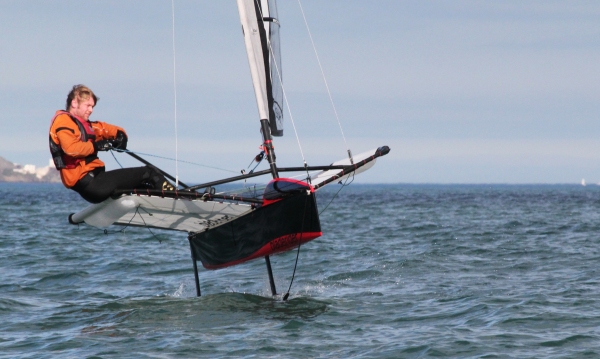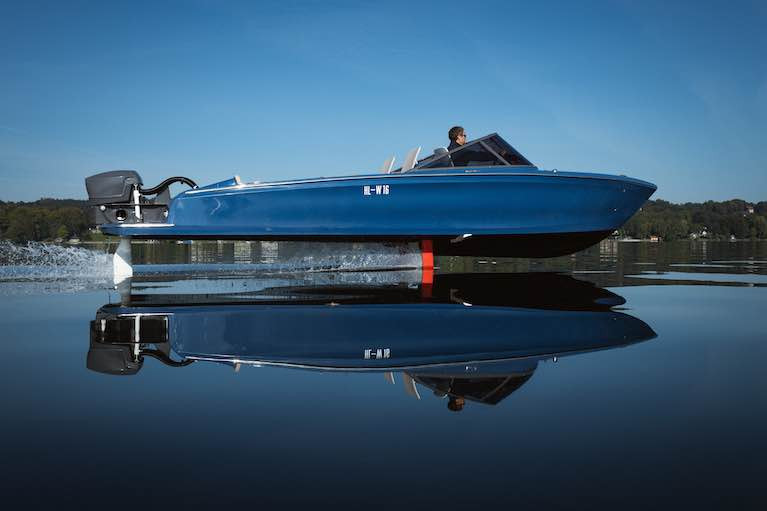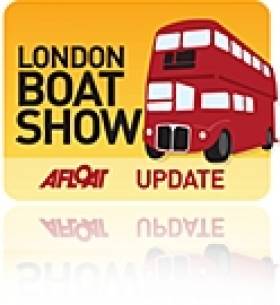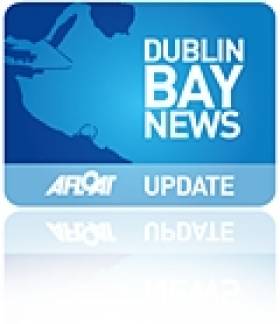Displaying items by tag: hydrofoil
Electric Hydrofoil Boat Flies through Venice (Video)
Swedish tech company Candela has showcased its electric hydrofoiling Candela C-7 through the waterways of Venice and says its wake-free design could save Venice from moto ondoso or wake damage.
As Afloat reported previously, waves caused by speedboats have become a genuine threat to the residents and buildings of Venice. The wake of the myriad taxi boats, water ambulances and police boats needed for transport in Venice erode the wooden pillars on which the city’s iconic houses stand.
According to the manufacturer, the Candela C-7 is the first speedboat that doesn’t create wake. ‘Flying’ above the water’s surface at high speeds, the company says hydrofoiling is the future for waterborne transportation.
Candela is currently working on the P-12 water taxi and the P-30 electric ferry, the latter has been purchased by Swedish authorities for public transport use in Candela’s hometown of Stockholm.
In a report by Reuters, Candela’s Maria Rohman says: “The boat has five sensors that read the water and speak to the computer system in the boat and the computer system tells the foils to move and they move 100 times a second, back and forth and diagonal to keep the boat stable. So when you are up flying it takes off at about 15 knots.”
World’s First Electric Hydrofoil Speedboat Powered by Torqeedo
Billed as the world’s first electric hydrofoil speedboat, the Candela Seven has been brought to market by Swedish startup, Candela Speed Boat.
Propelled by the Torqeedo Deep Blue 50i electric outboard engine the boat cruises above the water, its weight rested on two hydrofoils. The vessel has a top speed of 55 km/h and a range of 92 km when driven at 37 km/h.
“The Candela Seven combines minimum energy consumption with maximum performance,” says Dr Ralf Plieninger, Managing Director of Torqeedo. “The electric hydrofoil is a game-changer for marine electric mobility.”
The Candela Seven’s development has been driven by Candela Speed Boat’s CEO, Gustav Hasselskog, who wanted to know if it was possible to combine modern electric motors with the hydrofoils that are now standard equipment in much competitive sailboat racing.
A leader in electric drives for watercraft up to 120-feet, Torqeedo was founded to solve similar problems. “Even though we’ve grown a lot since then,” says Plieninger, “we’ve held onto our start-up culture. We enjoy solving problems and doing things differently.”
 Torqeedo's deep blue electric engine unit
Torqeedo's deep blue electric engine unit
The Candela Seven is 7.7 metres long and seats six. Its Deep Blue electric motor accelerates the boat smoothly until the vessel reaches 27km when it rises out of the water onto its hydrofoils. “The energy consumption drops 80 per cent in hydrofoil mode—that gives us a range similar to a gasoline engine,” says Hasselskog. It’s said the boat runs very smoothly on its hydrofoils with no slamming into waves, and no noise.
 The flying Candela Seven Photo: Christian Brecheis
The flying Candela Seven Photo: Christian Brecheis
The Candela Seven’s design is based on insights from the field of aeronautics. The hull and deck are made of carbon fibre and weigh 180 kg. At a total weight of 1300 kg, the Candela Seven is thirty per cent lighter than a conventional fibreglass boat.
Candela has also developed a ‘flight control’ system with multiple sensors that supply it with GPS, sonar, and engine data. The system then mechanically adjusts the main and aft foils on the fly. This is designed to keep the boat steady in heavy waves or during sharp turns. And if travelling through shallow water, the hydrofoils retract by tapping the touch screen.
Hydrofoil Dinghy Sailor Breaks Cross Channel Record
#channelrecord – Hannah White has become the fastest person to cross the Channel in a single-handed dinghy. She completed the gruelling task in a sailing hydrofoil, a small boat which lifts above the water on two hydrofoils as it gathers speed. Starting from Cap de Gris in France, she arrived at Dover in England in a record time of 3 hours, 44 minutes and 39 seconds.
Hannah, a relative beginner in hydrofoil sailing, only started to learn how to master this unique boat in February. Training for this Channel crossing challenge is a precursor to her ultimate quest: to break the Women's Speed Sailing World Record over one nautical mile next year in a unique, purpose-built sailing hydrofoil.
A keen adventurer, Hannah has previously sailed the Atlantic solo three times, participated in the gruelling Haute Route Cycle Race across the French Alps and kayaked 205 miles across the rivers of England. She has been a Land Rover Global Ambassador since 2013.
Hannah White said: "I'm much more used to an arduous 3000-mile slog across oceans as opposed to a 24-mile sprint across the Channel, so the transition has been a real eye-opener. Speed sailing requires a very different physiology to long distance races, so this was really an opportunity for me to build my skills over a shorter distance in a hydrofoiling boat."
Mark Cameron, Jaguar Land Rover Global Experiential Marketing Director, said: "This Channel crossing highlights Hannah's incredible ability to push herself beyond the limits of normal capability. As a global ambassador for Land Rover, Hannah embodies all the characteristics that are so central to our brand; strength, determination and an ability to go above and beyond."
Hannah will be attempting to break the Women's Speed Sailing Record over one nautical mile in the first quarter of 2016 in Speedbird, her state-of-the-art, unique hydrofoil sailboat. Land Rover is collaborating in the development of the Speedbird boat, drawing from its unparalleled innovation, engineering expertise and industry-leading facilitiesto ensure the boat is capable of breaking the current world record.
Hannah will be exhibiting the Speedbird boat at the Cardiff Act of the Extreme Sailing SeriesTM on the 19-21 June 2015.
See Foiling Catamaran at Tomorrow's London Boat Show
#londonobatshow – A first for tomorrow's London Boat Show is the real-time build of a 5.9m sailing catamaran with a cutting-edge hydrofoil system developed by Southampton Solent University. Afloat first reported on the new British foiling cat last September when she made her UK debut.
The first production model of the 'Solent Whisper', which has already turned heads at both the PSP Southampton Boat Show and the Paris International Boat Show, will take shape before the eyes of the media and the public. The retail version of the craft, which comfortably achieves over 25 knots and incorporates a revolutionary new hydrofoil system, is being manufactured by White Formula UK Ltd.
Helena Lucas, Paralympic Gold medallist and graduate of Southampton Solent University, has sailed the prototype boat and will be on hand at The Datatag Lab to help 'launch' the catamaran building activities on Friday 9 January at 1.45pm.
Visitors will be able to watch all the stages of production from the preparation of the moulds, to the final infusion of resin into the carbon fibre of the boat.
The new hydrofoil technology is the brainchild of Ron Price, a Southampton Solent University yacht and powercraft design graduate who is now Senior Lecturer in Naval Architecture at the University's Warsash Maritime Academy.
Moth Dinghy Debuts on Dublin Bay
Since our report on Ireland's debut at the Moth worlds in January it was inevitable that one of these high speed sailing dinghies would appear on Irish waters soon enough. Yesterday, John Chambers took his first tack of 2011 on Dublin Bay in a Moth he bought in France. Clearly the high speed foiling craft did not go unnoticed. It got an immediate thumbs up from the nearby DMYC frostbite fleet sailing their penultimate race.
The Bladerider Moth came blasting back from the Baily lighthouse, according to eyewitness accounts. It has hydrofoils on the dagger board and rudder which lift the boat out of the water when sufficient speed is achieved.
It is Chamber's intention to sail the innovative dinghy in this Summer's Dublin Bay Sailing Club (DBSC) summer season.
Video of the Dublin Bay sail plus a photo from Bob Hobby is below:

Moth sailing on Dublin bay. Photo: Bob Hobby
Moth sailing in Ireland on facebook HERE
































































